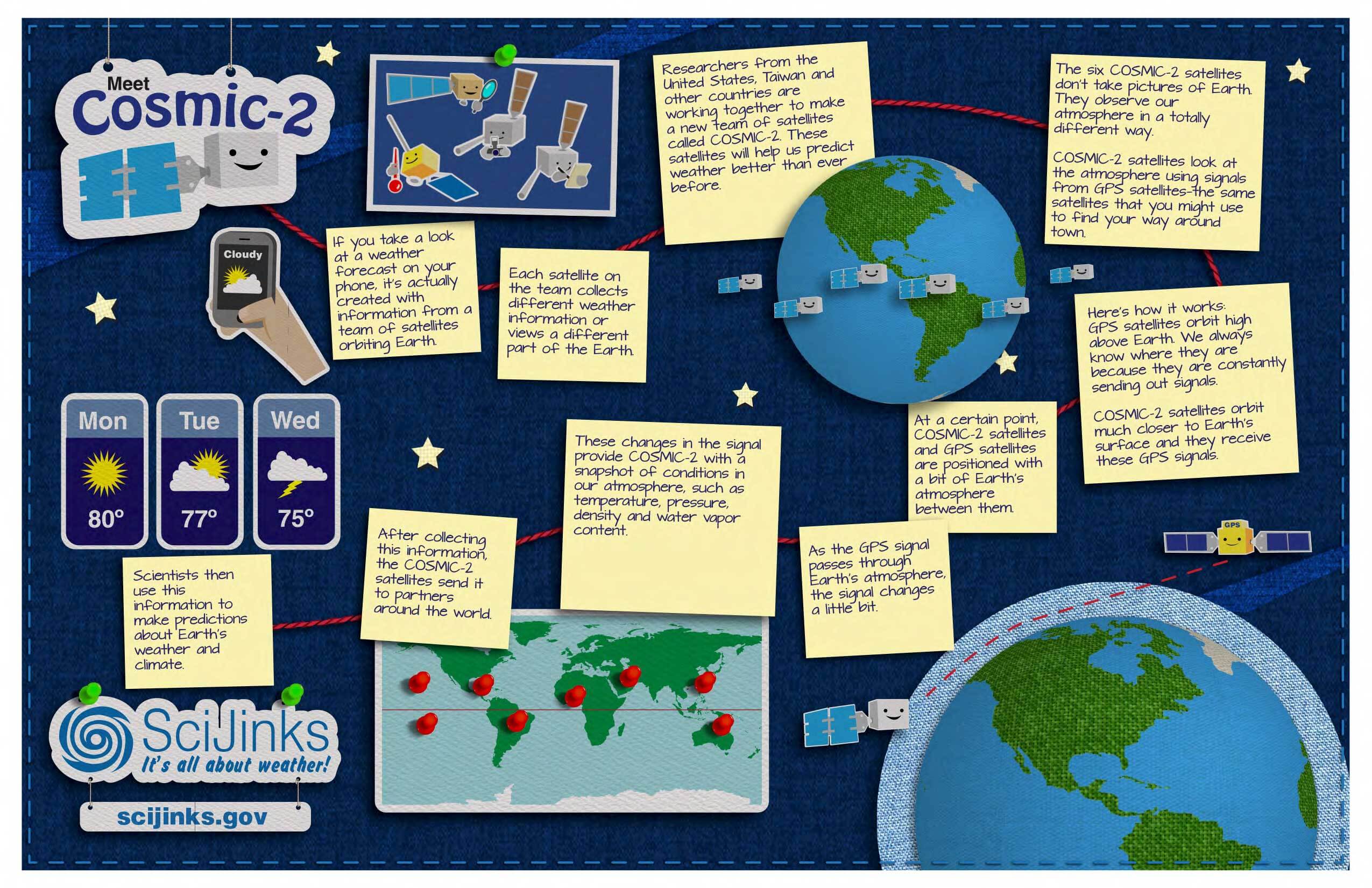Watch this video to meet Cosmic-2! Click here to download this video (1280x720, 93 MB, video/mp4).
COSMIC-2—short for Constellation Observing System for Meteorology, Ionosphere and Climate—is a team of six small satellites that will collect information about Earth’s weather and climate.
These satellites orbit Earth, circling around the equator at roughly 17,000 miles per hour! As they zip by, COSMIC-2 satellites gather information about our atmosphere.
How does COSMIC-2 work?
COSMIC-2 doesn’t keep an eye on our planet by taking pictures—it looks at Earth in a completely different way. The small satellites collect information using signals from GPS (Global Positioning System) satellites—the same satellites that can help you find your way around town.
GPS satellites work by sending radio signals down to Earth. Some of these signals pass through the Earth’s atmosphere and can be received by another satellite like COSMIC-2, which orbits close to the Earth.
By measuring the very small bending in the GPS signal, the information collected by COSMIC-2 satellites provides meteorologists with details about Earth’s atmosphere—such as temperature, pressure, density and water vapor—all over the globe.
What does COSMIC-2 do?
- Improve accuracy of weather forecasts up to four days in advance
- Collect water vapor data that will help meteorologists observe, study, and forecast hurricanes and other severe storms
- Monitor space weather—a type of weather that can be created by the Sun—to provide early warnings of solar activity that can disrupt the power delivered to your home
- Provide accurate global temperature readings to improve our understanding of long-term changes in Earth’s climate

Download a poster of this animation!
Print as 8.5 x 11 or 11 x 17 inches

For launch updates and more detailed information about this satellite system, check out https://www.nesdis.noaa.gov/OPPA/cosmic2.php




